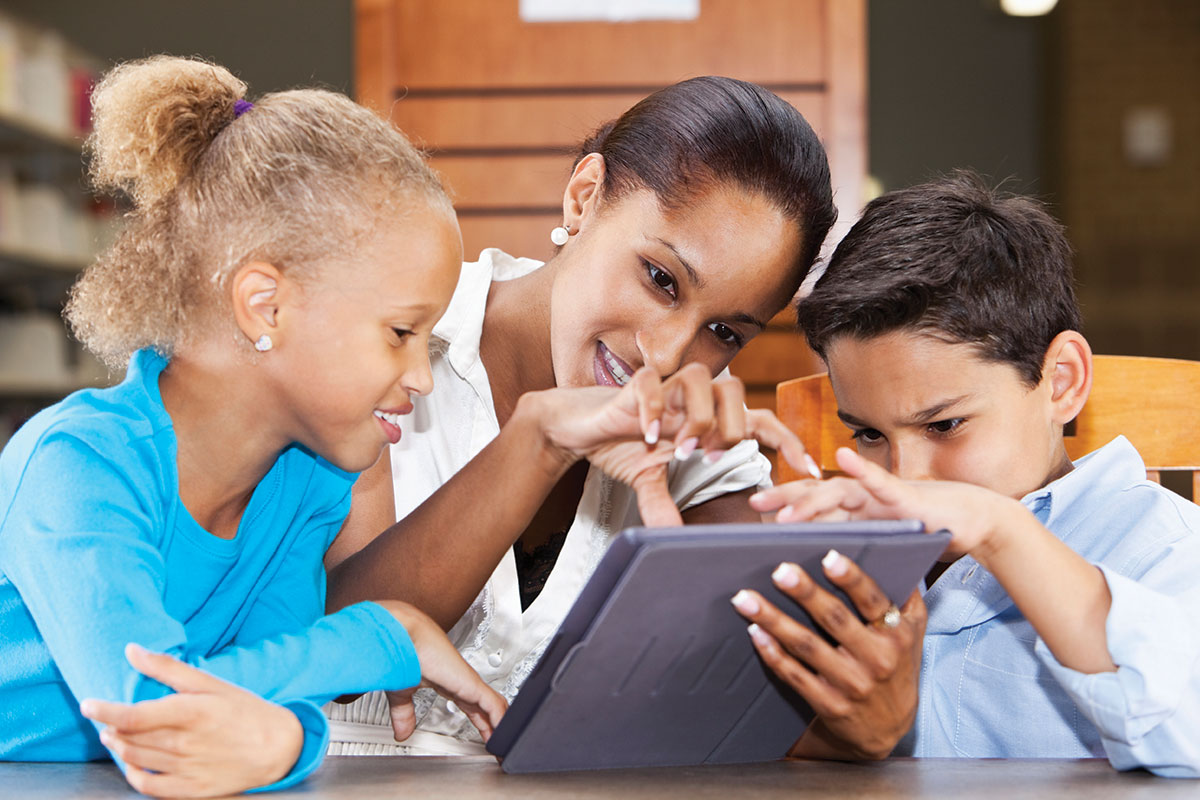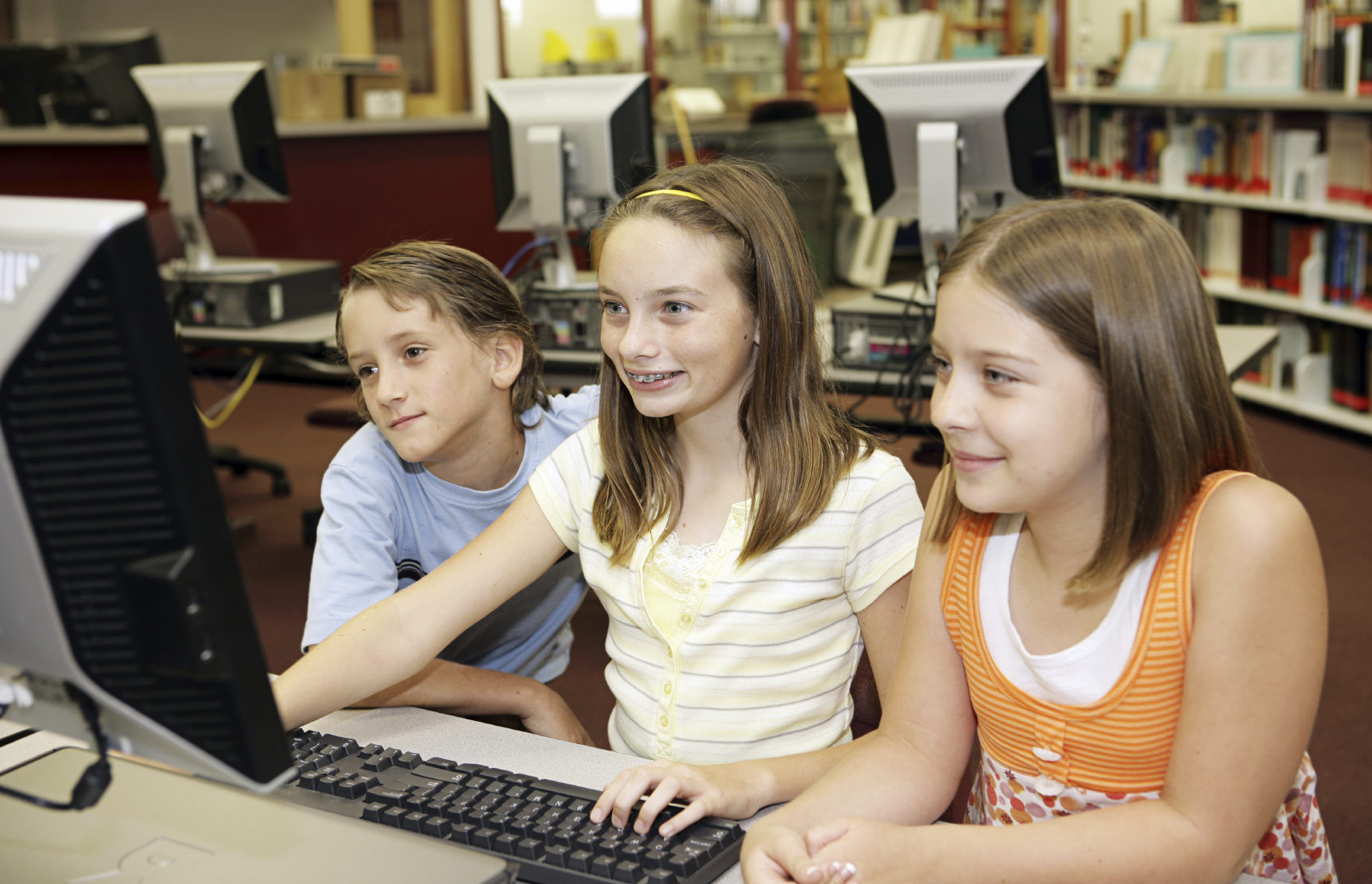
“I don’t have an iPad at home. Will my child be behind when it’s time for school?”
“I’m not sure how much screen time is right for my child. I keep hearing conflicting information.”
“Where do I find guidelines on how to manage my family’s media use?”
“I don’t want my child looking at a screen instead of playing outside.”
Do these questions and concerns sound familiar?
The percentage of children with access to a “smart” mobile device at home, such as a smartphone or tablet, jumped from 52 percent to 75 percent in just two years, according to a 2013 Common Sense Media report titled Zero to Eight: Children’s Media Use in America. As kids’ access to screens increases, it can seem like there are few places for parents to turn to in their communities to discuss their concerns. How do you make informed decisions for your family when it comes to technology?
Actually, you need look no farther than your local library. Surprised?
The profession of children’s librarianship has undergone a major shift in the past few years, precipitated by changes in the communities served by children’s librarians. As children become more tech savvy and app hungry, children’s librarians are stepping into the role of media mentor — someone in the community who supports families in making healthy and informed media decisions. At the University of Washington Information School, future children’s librarians are learning how to evaluate apps and digital media in addition to traditional print media. And online privacy concerns from patrons are also a part of a new curriculum focused on 21st century skills. These students are perfectly equipped to step right into the role of media mentor. (To find out more about this shift, read the Media Mentorship in Library Serving Youth paper adopted by the Association for Library Services to Children, a division of the American Library Association).
Here are five ways to tap into the new skills and tech savvy of your local librarian and make that person your family’s media partner:
1. Talk with the librarian about your family’s media questions and goals.
Whether you have a tot interested in dinosaur books, a tween hoping to swipe her way through a school project or an indie-film-obsessed teen trying to learn how to make a movie of his own, librarians can point you to resources that provide ideas for family media plans and keep kids safe as they explore.
“We’re hearing from our community that they want to know which apps to use,” says Judy Nelson, customer experience manager for youth for the Pierce County Library System. Talk with your librarian about your family’s habits around media and ask questions. You know your family best, and librarians want to support you in your decisions to include or not include media in your daily lives.
2. Ask your librarian to connect you with research from experts.
Children’s librarians keep up on the latest research related to youth and media. For instance, did you know that the American Academy of Pediatrics has just revised its position on screen time? They are now recommending that screen time be interactive between parents/caregivers and children to help facilitate an environment of learning and engagement. Whether it’s new information related to child development and the use of technology or recommendations from ongoing research about how early learning and apps fit together, librarians want to connect you with guidelines and best practices that will help you in your own decision making, such as Children’s Technology Review.

3. Ask your librarian to recommend high-quality, age-appropriate media.
Librarians are famous for recommending good books; did you know that they also recommend other forms of media? Pierce County Library System’s website features links to curated lists of apps and reviews for families. Visit their website at here and here for more information.
Kitsap Regional Library has a blog post in which they recommend literacy apps. And librarians want to learn from you, too, so be sure to share your own app and game experiences with them.
4. Check out libraries’ innovative programming for children on technology and suggest new ideas!
Libraries are providing programs that feature different forms of technology. Some programs coincide with bigger events, such as Hour of Code (a global event to get kids interested in coding), to promote STEM learning and experimentation. These programs give kids the opportunity to collaborate and innovate in a shared space, and most are free or low-cost.
One King County Library System branch is taking an innovative approach to tech-themed programming for kids. The Sammamish branch will be offering a series of programs in December focusing on the book Hello Ruby, a children’s book from Finland that celebrates the philosophy of creativity behind computing. The programs will encourage children to think about how technology works and their own use of technology, all by using paper, flannel and other objects. Visit the website for more information.
Also, several Pierce County Library System branches incorporate tablets into their story-time programs, using apps during the program and using the tablets with projectors.
5. Learn about how to access media and opportunities for family engagement.
Librarians are ready and willing to help you and your family learn how to use technology as a joint learning experience. One of the many enduring benefits of public libraries is the open access to media that they afford — now digital access is available, too.
Several branches of The Seattle Public Library offer iPads for families to use. The tablets feature curated free and paid apps, selected based on a set of criteria focused on informal learning for young children. Some King County Library System branches will also be carrying tablets through a small pilot project this fall. Check with your local library to see what devices it offers.
Kitsap Regional Library branches offer a program called Open Lab, in which children and families can come by the library to try out various games and activities, such as Makey Makey, Minecraft, Microsoft Kodu and Snap Circuits. Check your local branch’s website for dates and times.
And don’t worry — books are still a part of libraries! But libraries have so much more to offer, including databases for school reports, media to stream or borrow, and more. “Technology is just another tool of learning,” says Erica Delavan, children’s services librarian at the Northeast Branch of The Seattle Public Library. She says libraries “are a place where kids and families can come to do informal learning, where kids get to decide what they’re learning.”
Talk to your local librarian about how you can get involved in the programs being offered for kids around technology. Together, you can be media partners for your family.









